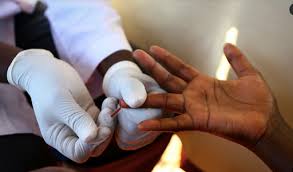
At least 16,752 Kenyans were newly infected with HIV last year, most of them being adolescents and youths aged 15 to 34 years.
This is a welcome reduction of about 5,000 from the 22,154 Kenyans who tested positive in 2022.
The National Syndemic Diseases Control Council released the preliminary figures on Thursday in Machakos ahead of World Aids Day on December 1.
The new infections have been reducing drastically since 2013 when 101,560 Kenyans tested positive in one year, and the latest figures indicate a continuation of that trend.
Japheth Kioko, the head of monitoring and evaluation at NSDCC, said last year, 8,937 women newly tested positive, compared to 4,072 men and 3,743 children below 14 years.
“The total number of Kenyans living with HIV in 2023 was 1,378,457, making the national HIV prevalence 3.3 per cent,” Kioko said.
“Most new infections (more than 51 per cent) were in 10 counties.”
These counties were led by Nairobi where most new infections took place.
The rest, in order of new infection burden, are Kisumu, Nakuru, Migori, Homa Bay, Uasin Gishu, Siaya, Mombasa, Kakamega and Kericho.
The report indicates most people being infected with HIV are below 34 years.
The riskiest age appears to be 20-24, where many young people are in colleges and universities.
“Adolescents and young adults aged 15-34 years contributed to 73 per cent of all new adult HIV infections in 2023,” Kioko said.
Reuben Musundi, the deputy director in charge of partnerships and advocacy at NSDCC, noted that slightly more people died from HIV-related causes last year.
In 2023, at least 20,480 Kenyans died from HIV-related causes compared to 18,473 people in 2022. Aids-related deaths in Kenya have actually been reducing, despite some blips such as last year’s.
Kenya, for instance, achieved a 64 per cent reduction in Aids-related deaths, from 58,446 deaths in 2013 to 20,480 last year.
Musundi expressed concern that although most infections are among women, Kenyan men are disproportionately dying from HIV-related illnesses compared to women.
“While males account for 35 per cent ( 487,710 ) of all people living with HIV, close to half ( 48 per cent or 9,808 ) of all Aids-related deaths occurred among men,” he said.
He noted that six in every 10 adult men who died from Aids-related causes last year were aged 35- 54 years.
Ages 45 to 49 marked the peak of these deaths.
“These statistics call for emphasis towards targeted interventions for men and boys to reduce
AIDS-related deaths.




